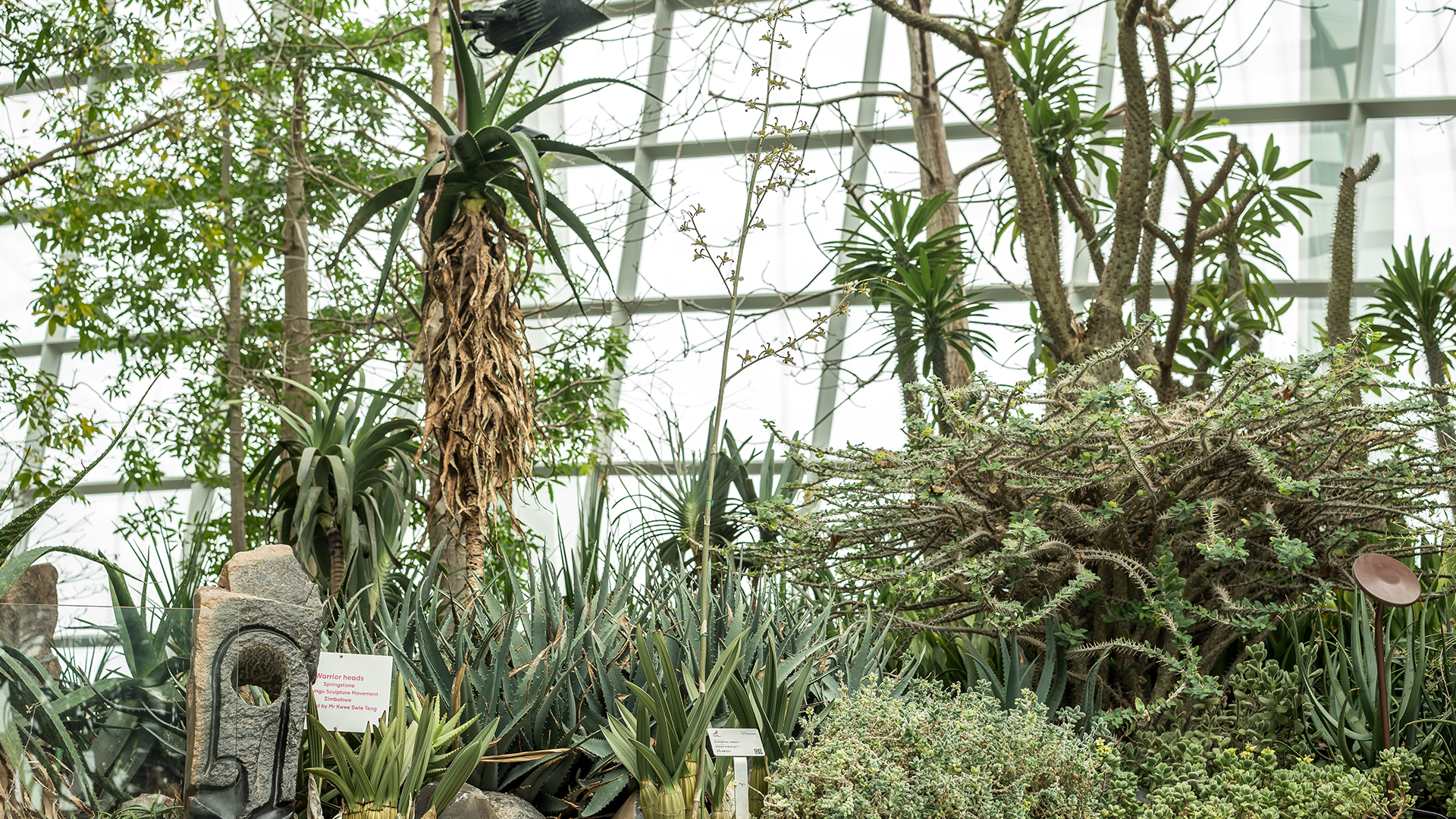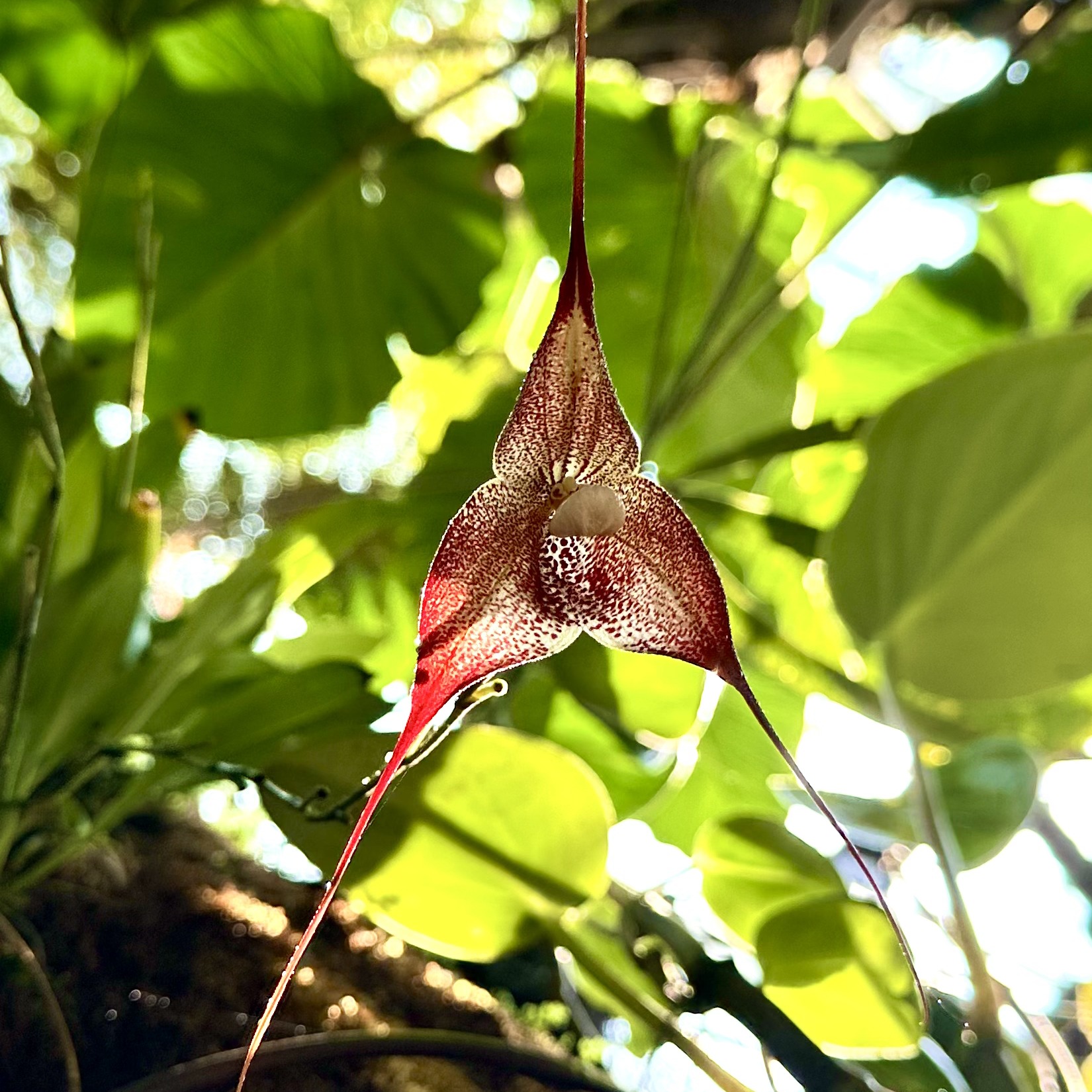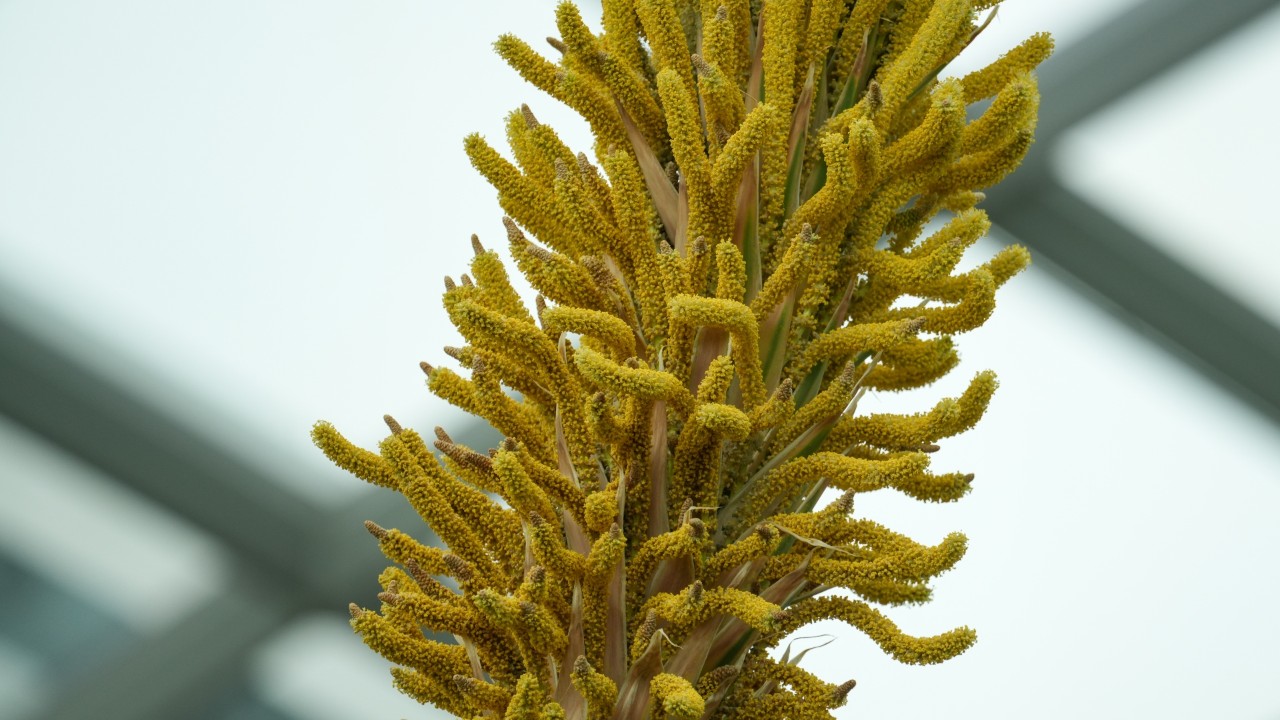
Dasylirion quadrangulatum, commonly referred to as the toothless desert spoon or the Mexican grass tree, is a unique succulent shrub native to the dry limestone slopes and arroyos (seasonally dry gullies) of Mexico’s Sierra Madre Oriental mountain range, through the states of southern Nuevo León and southwestern Tamaulipas. It thrives in open chaparral ecosystems alongside other arid, semi-desert plants including century plants (Agave spp.), yuccas (Yucca spp.) and creosote bush (Larrea tridentata). This perennial also belongs to the Asparagaceae family, the same family as the asparagus that you eat for dinner!
A slow-growing, long-lived evergreen shrub, the toothless desert spoon can live more than 150 years. Its crown of narrow, leathery, quadrangular leaves, each up to 2m long, emerges from a central basal rosette, forming a dense, symmetrical sphere of foliage. After many years of growth, plants will start to develop a stout trunk that can eventually reach up to 1.5 metres tall, with the whole plant growing up to 1.8 to 2.7 metres in height and width. Unlike many of its relatives, the leaves lack the sharp prickles found in most other Dasylirion species and the leaf bases are spoon-shaped, hence, the name ‘toothless desert spoon’! Old leaves are not shed but form a dense, multi-layered “skirt” around the trunk. These may blacken or burn off completely from wildfires but help protect the internal meristem of the plant from being damaged by the flames.
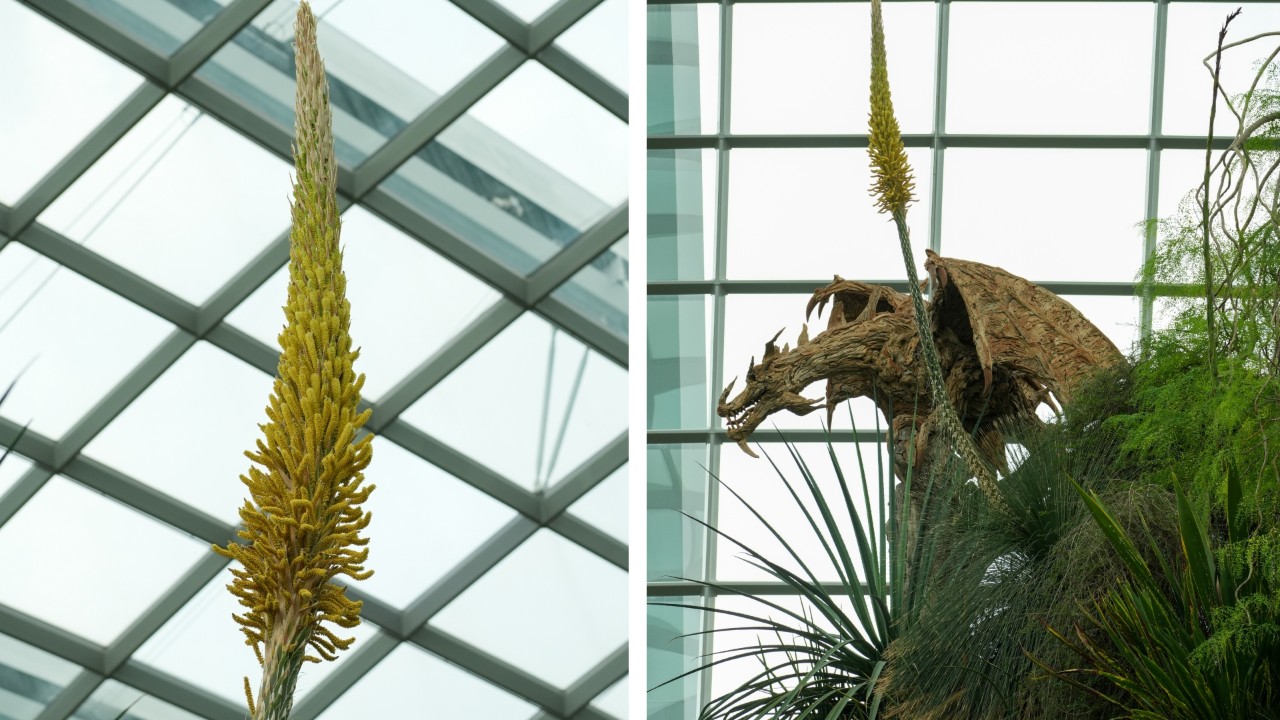 The toothless desert spoon currently in bloom is a male plant. Pictured here is the top of flowering spike (left) and the entire plant, against the backdrop of the Wyvern sculpture in Flower Field lookout area of The Baobabs (right)..
The toothless desert spoon currently in bloom is a male plant. Pictured here is the top of flowering spike (left) and the entire plant, against the backdrop of the Wyvern sculpture in Flower Field lookout area of The Baobabs (right)..
The toothless desert spoon produces an enormous inflorescence – a whitish-green flower spike that can soar up to 3 to 6 metres tall and usually flowers in March to early April in its native habitat. The flower spike’s massive stem (peduncle) can be up to 5–7 cm thick at the base and is densely covered in hairy, lance-shaped bracts resembling old corn husks. Male (staminate) and female (pistillate) flowers form on separate plants—a trait known as dioecy—and are arranged in fascicles, usually with three to four branches. Thousands of tiny flowers just 2-3mm in length are borne on each flowering spike. The male flowers produce copious pollen, attracting bees and butterflies, supporting local pollinator populations.
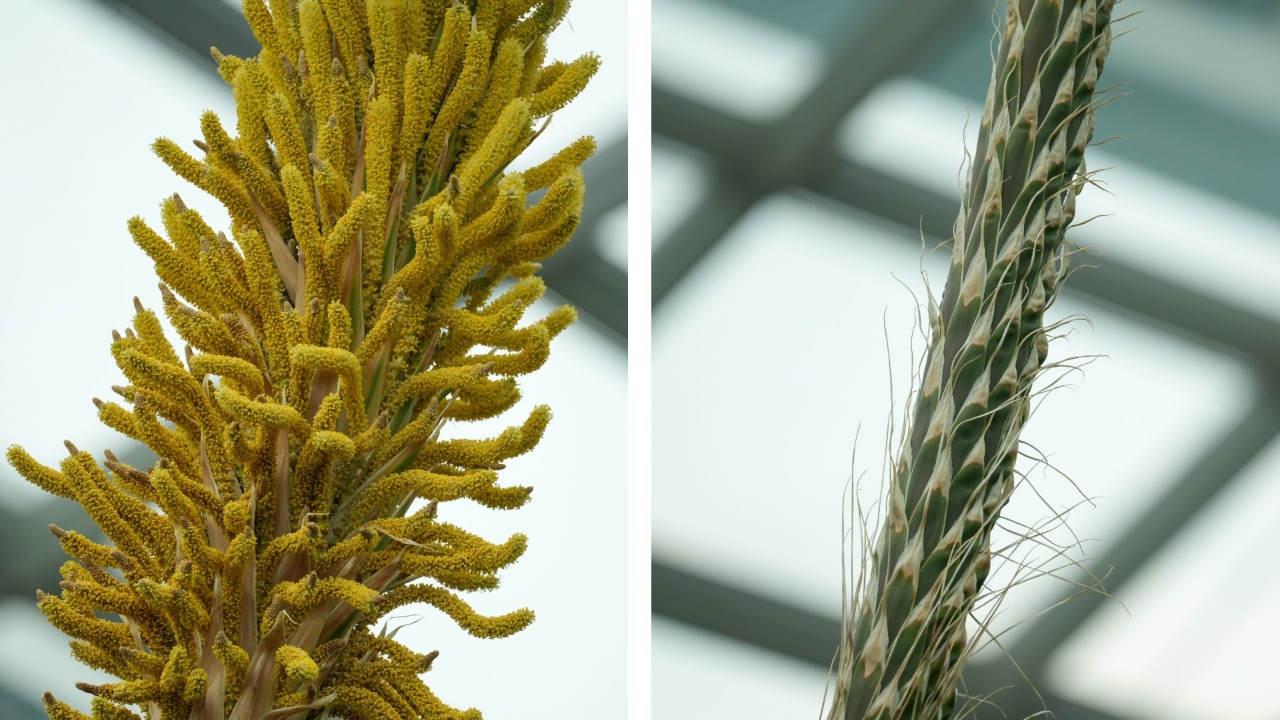 Close-up of the top of the male flowering spike (left), showing the branched, yellow-orange fascicles, coloured by the yellow, pollen-bearing anthers of hundreds of tiny male flowers. In contrast, the base of the flowering spike is covered with narrow, lance-shaped bracts, each with a long, thin, papery tip (right).
Close-up of the top of the male flowering spike (left), showing the branched, yellow-orange fascicles, coloured by the yellow, pollen-bearing anthers of hundreds of tiny male flowers. In contrast, the base of the flowering spike is covered with narrow, lance-shaped bracts, each with a long, thin, papery tip (right).
The flowering portion is blunt-tipped and compact, with larger, overlapping floral bracts at the top. Though its fruits, only borne by female plants, are not the largest in the genus, they are dark burgundy, often splitting along the carpels to release one to two seeds.
In natural conditions, the toothless desert spoon grows upright, unlike many of the other plants in the same genus that eventually recline. Despite its massive size, the plant has shallow roots, making it susceptible to being uprooted in high winds. However, its resilience to drought and fire makes it ideal for xeriscaping in sunny, arid, free-draining locations.
Interestingly, D. quadrangulatum bears a remarkable morphological resemblance to the Australian grasstree genus Xanthorrhoea. Both form upright trunks, quadrangular leaves, and massive flower spikes and have adaptations that allow them to thrive in arid ecosystems sometimes swept by wildfires. Despite their similar chaacteristics and even shared flavonoid compounds, DNA analysis confirms no close genetic relationship, indicating convergent evolution due to similar environmental pressures.
Find the huge flowering spike of the toothless desert spoon at the Baobab section of Flower Dome! After entering Flower Dome, cross to the overlook area and look for the giant Wyvern sculpture - you can’t miss the flower stalk right beside it!
Written by: Sharifah Osman, Senior Manager (Research and Horticulture)
As an avid flora photographer, Sharifah is consistently curious about the natural world that surrounds her. So much so that she eventually pursued a career in horticulture while dabbling in botanical art and photography during her free time.
